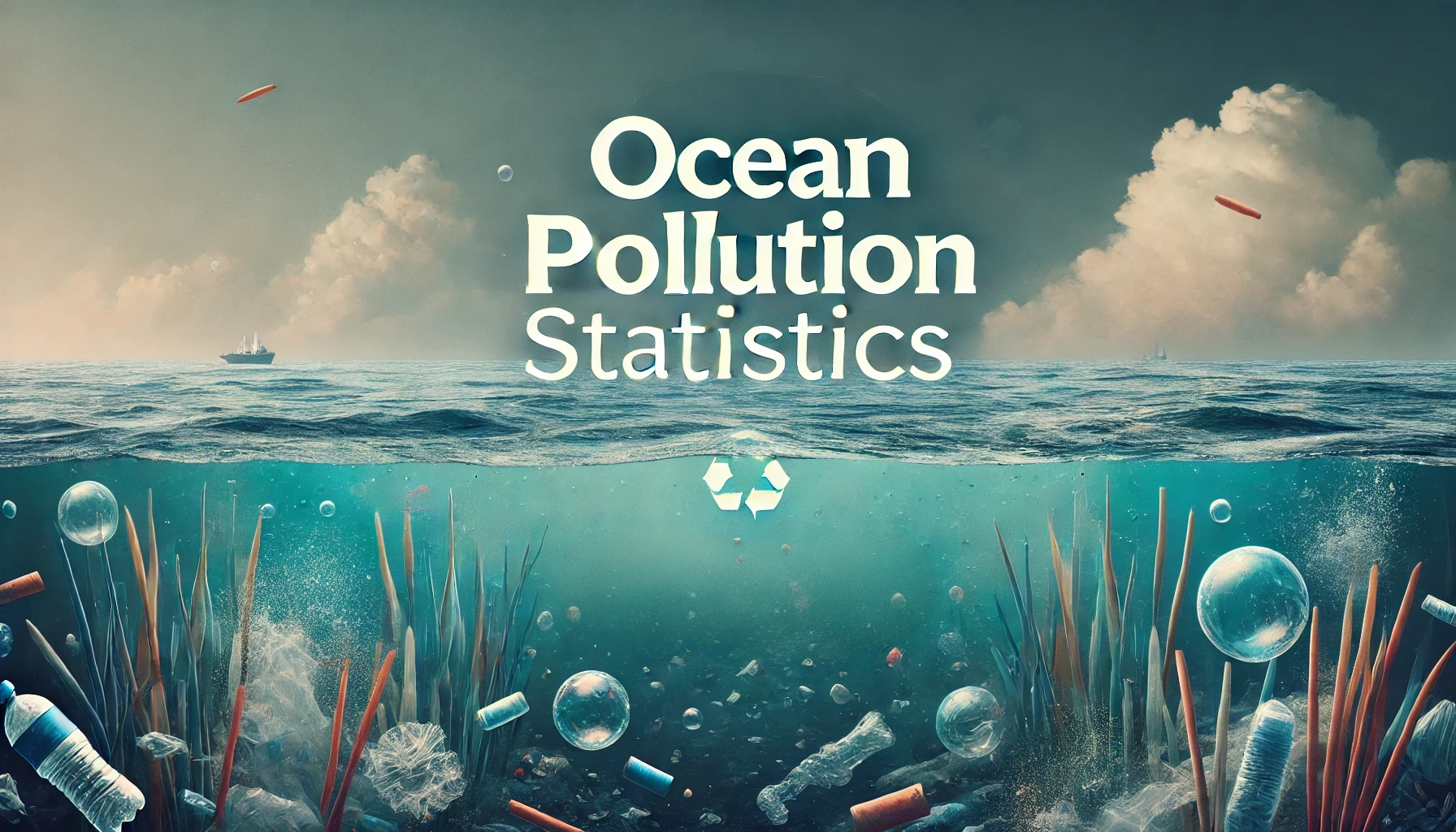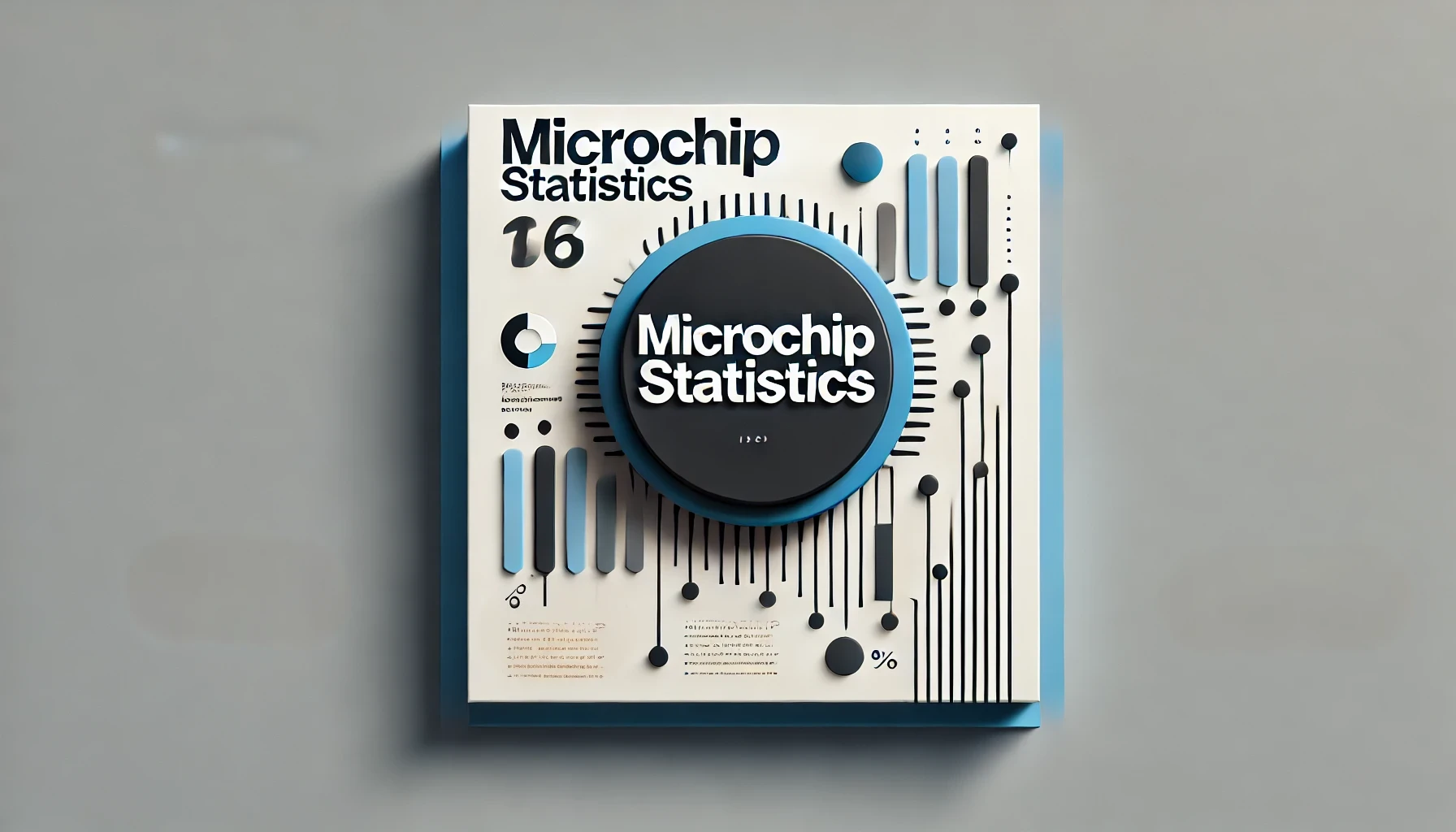Ocean Pollution Statistics By Leading Sources of Pollution and Share of Waste Items in The Ocean
Updated · Sep 18, 2024

Table of Contents
- Introduction
- Editor’s Choice
- General Ocean Pollution Statistics
- Ocean Pollution Statistics by Share of Waste Items in The Ocean
- Ocean Pollution Statistics by Region
- Top 10 Countries with the Most Ocean Plastic Pollution in 2024
- Ocean Pollution Statistics by Leading Sources of Pollution
- Causes of Ocean Pollution
- Protecting Ocean Water and Marine Life: A Vital Responsibility
- Why Protecting Ocean Water Matters
- Threats To Ocean Water and Marine Life
- Protecting Ocean Water and Marine Life: What Can We Do?
- Conclusion
Introduction
Ocean Pollution Statistics: Who doesn’t love beaches? During summer, the majority of the population goes to beach-side countries. But most of them do not care about the environment and pollute the beaches and seawater. Moreover, Ocean Pollution Statistics show that industrialization, agriculture, and ship transport are also leading causes of water pollution.
If the rate of water pollution continues for the next few years, there will be more plastic in the ocean than marine life by 2050. This is a sad reality. Conservation of ecosystems and marine life is essential for various reasons. Let’s look at the Ocean Plastic Pollution Statistics as well.
Editor’s Choice
- Considering the current waste and plastic pollution in the ocean, if this trend continues, the total waste will be more than 1 billion tonnes in the next 40 years.
- 80% of worldwide marine pollution is generated from untreated sewage, released pesticides and nutrients, and agricultural waste.
- The Philippines, India, and Malaysia are the top 3 countries with the highest amount of waste in the oceans in 2024.
- Half of the plastic manufactured is for single use. However, it has caused the highest level of pollution in the Great Pacific Ocean, with the giant garbage patch.
- The majority of ocean waste comes from household items such as plastic bottles, cutlery, wrappers, bags, and food containers.
- Due to marine pollution, more than 500 locations are classified as dead zones, where no aquatic life can exist.
- The majority of ocean waste comes from household items such as plastic bottles, cutlery, wrappers, bags, and food containers.
- 40% of seabird species, 59% of whales, 100% of marine turtles, and 36% of seals have been severely affected by ocean plastic pollution.
- The International Union for Conservation of Nature’s Red list of threatened species included 17% of species affected by plastic pollution in the ocean.
General Ocean Pollution Statistics
- According to Ocean Pollution Statistics, 80% of worldwide marine pollution is generated from untreated sewage, released pesticides and nutrients, and agricultural waste.
- Furthermore, 20% of the plastic pollution in the oceans is generated from industrial fishing.
- More than 100 nuclear tests were conducted in all across oceans between 1950 to 1998.
- Considering the current waste and plastic pollution in the ocean, if this trend continues, the total waste will be more than 1 billion tonnes in the next 40 years.
- Ocean Pollution Statistics show that it affects more than 817 animal species around the world.
- Marine pollution has increased by 23% over the last five years.
- 40% of seabird species, 59% of whales, 100% of marine turtles, and 36% of seals have been severely affected by ocean plastic pollution.
- Ocean Plastic Statistics estimate that 75 to 199 million tons of plastic waste is currently lying in the ocean.
- It is estimated that by 2050, plastic will exceed the number of fish in the sea.
- Due to marine pollution, more than 500 locations are classified as dead zones, where no aquatic life can exist.
- The International Union for Conservation of Nature’s Red list of threatened species included 17% of species affected by plastic pollution in the ocean.
- Around 14 million metric tons of ocean waste is lying on the seabed.
- Every year, 8 million tons of plastic unnecessarily enters oceans.
- Oil spills cause 12% of ocean pollution.
- With the current rate of ocean pollution, ocean pollution statistics say that by the end of the century, ocean water will become 150% more acidic than it is now.
- Every year, humans create more than 400 million tons of plastic waste.
- Half of the plastic manufactured is for single use. However, it has caused the highest level of pollution in the Great Pacific Ocean, with the giant garbage patch.
- One of the leading ocean pollutants is polyethene bags.
- The majority of ocean waste comes from household items such as plastic bottles, cutlery, wrappers, bags, and food containers.
- Every year, around 100,000 marine animals lose their lives because of plastic waste in the ocean.
- Every 60 seconds, plastic waste the size of a truck comes from around the globe to the oceans.
- Of all the plastic in the ocean, 236,000 microplastics are ingestible and often consumed by marine animals.
- Ocean Pollution Statistics show that currently, 11.1 billion plastic items are twisted with coral reels in the Asia Pacific Ocean, a number that is estimated to increase by 40% by 2050.
- On average, 300 million plastic bags end up in the Atlantic Ocean each year.
- 46% of the plastic manufactured in the world floats in the ocean water. In addition, 1 trillion microplastic and 25 trillion macroplastic plastic are currently in marine ecosystems.
- Ocean Plastic Pollution Statistics show that most of the plastic in the ocean is small pieces that are less than 1 cm in size. This accounts for the mass of 1 of 10 paper clips.
- Plastic pollution in the ocean is also responsible for significant economic losses estimated to amount to billions of dollars each year.
- The garbage patch in the Pacific Ocean is super dense, and because of sunlight blockage, it has led to the death of micro and macro marine life.
- Furthermore, the patch in the Pacific Ocean is 617,763 miles long, which is comparatively larger than the entire state of Texas.
- Compared to every person on the earth, there are 21,00 plastic pieces in the ocean per person.

(Reference: greenmatch.co.uk)
According to the Plastic Pollution in the Ocean Statistics, most of the waste items in the sea are single-use plastic bags (14.1%). Other types of plastic or waste found in the ocean are plastic bottles (11.9%), food containers/ cutlery (9.4%), wrappers (9.1%), synthetic rope (7.9%), fishing gear (7.6%) and plastic caps or lids (6.1%).
Ocean Pollution Statistics by Region
- Ocean Pollution Statistics show that the top contributor to plastic pollution is the Asian region, resulting in 81%.
- Africa and South America put up 8% and 5.5% respectively.
- However, Europe, North America, and Oceanian regions are the regions with the least number of contribution toward ocean pollution, resulting in less than 1%.
Top 10 Countries with the Most Ocean Plastic Pollution in 2024

(Reference: greenmatch.co.uk)
The Philippines, India, and Malaysia are the top 3 countries with the highest amount of waste in the oceans in 2024. The Philippines and India have 356,371 and 126,513 waste in metric tons, while Malaysia contributes 73,098 metric tons of garbage. Other names include Chin, Indonesia, Myanmar, Brazil, Vietnam, Bangladesh, and Thailand, which have a significant amount of plastic waste in the ocean.
Ocean Pollution Statistics by Leading Sources of Pollution
| Reason | Impact |
| Light Pollution | Disturbances in marine life behavioral patterns, exposure of vulnerable creatures to their prey, fertility impact on marine animals |
| Industrial pollution | Poisonous to animals, degraded water quality, lead to dead zones |
| Noise Pollution | Causes hemorrhage in marine animals’ organs, reduction in ways of communication in animals, leads to deafness |
| Nutrient pollution | Reduction in oxygen levels in the water creates dead zones |
| Non-point source pollution | Dangerous for wildlife and marine animals, affects the quality of drinking water |
| Plastic Pollution | It disturbs the ecosystem, causes death in marine animals, and degrades the quality of water. |
(Source: cleanhub.com)
Causes of Ocean Pollution
- Carbon Emissions: Carbon emissions have been estimated to increase the pH level on the ocean’s surface by 30%. This occurs because the ocean absorbs carbon emissions from the atmosphere.
- Industrial Waste: Industries are also responsible for ocean pollution. They discharge chemicals and other waste into the water, which later reaches the oceans.
- Agricultural Waste: 80% of ocean pollution is caused by agricultural waste. It includes the use of harmful pesticides, untreated sewage, etc.
- Plastic Waste: According to Ocean Plastic Pollution Statistics, 80% of worldwide plastic reaches the ocean through coastlines via rivers. It includes razors, plastic bags, and food wrappings. The remaining 20% is generated from fleets, ropes, and fishing nets.
- Geographical Distribution: The mishandled plastic waste entering the oceans is mainly due to the Asian region. As mentioned earlier, 81% of it is emitted from Asia.
- Nonpoint Source Pollution: 80% of the pollution in the ocean comes from land area. This includes silt and topsoils, which are harmful to marine life as well as wildlife animals.
Protecting Ocean Water and Marine Life: A Vital Responsibility
Our oceans cover more than 70% of the Earth’s surface, providing habitat for a vast array of marine life and playing a crucial role in regulating the planet’s climate. However, human activities are increasingly threatening the health of ocean water and the creatures that inhabit it. We must take action to protect our oceans and marine life to ensure a sustainable future for generations to come.
Why Protecting Ocean Water Matters
Protecting ocean water is essential for several reasons. First and foremost, healthy oceans are vital for sustaining life on Earth. Oceans produce over 50% of the world’s oxygen and absorb about 30% of carbon dioxide emissions, helping to mitigate climate change. Furthermore, oceans provide a significant source of food and livelihood for millions of people around the world, particularly in developing countries. According to the Food and Agriculture Organization (FAO), over 3 billion people depend on marine and coastal biodiversity for their livelihoods.
Moreover, oceans support industries such as tourism, shipping, and fishing, contributing billions of dollars to the global economy each year. For example, the international ocean economy is estimated to be worth over $1.5 trillion annually, with fisheries and aquaculture alone contributing around $244 billion to the global economy. Protecting ocean water ensures the sustainability of these industries and the livelihoods they support.
Threats To Ocean Water and Marine Life
Despite their importance, oceans face numerous threats from human activities. Pollution, overfishing, habitat destruction, and climate change are among the most significant challenges facing ocean ecosystems today.
Pollution, mainly plastic pollution, poses a severe threat to marine life. Every year, millions of tons of plastic waste enter the ocean, harming marine animals through ingestion, entanglement, and habitat destruction. It is estimated that over 5 trillion pieces of plastic are floating in the world’s oceans, with plastic debris causing the deaths of over 100,000 marine mammals and millions of seabirds annually.
Overfishing is another critical issue facing ocean ecosystems. According to the World Wildlife Fund (WWF), over 30% of fish stocks are overexploited, meaning they are harvested at an unsustainable rate. This not only threatens the survival of fish species but also disrupts marine ecosystems and compromises the food security of coastal communities.
Habitat destruction, such as coral reef degradation and coastal development, further exacerbates the decline of ocean ecosystems. Coral reefs, often referred to as the “rainforests of the sea,” are home to a quarter of all marine species and provide essential services such as coastal protection and fish habitat. However, coral reefs are rapidly disappearing due to factors such as pollution, overfishing, and rising ocean temperatures.
Climate change poses perhaps the most significant threat to ocean water and marine life. Rising temperatures, ocean acidification, and sea-level rise are already having profound impacts on aquatic ecosystems, leading to coral bleaching, altered migration patterns, and habitat loss. If left unchecked, climate change could have catastrophic consequences for ocean biodiversity and the millions of people who depend on marine resources for their livelihoods.
Protecting Ocean Water and Marine Life: What Can We Do?
Protecting ocean water and marine life requires collective action at the individual, community, and global levels. Here are some steps we can take to safeguard our oceans:
- Reduce plastic pollution by using reusable bags, bottles, and containers and properly disposing of waste.
- Support sustainable seafood practices by choosing certified sustainable seafood products and avoiding overfished species.
- Advocate for policies that protect marine habitats and promote sustainable fisheries management.
- Reduce our carbon footprint by using clean energy sources, reducing energy consumption, and supporting initiatives to combat climate change.
- Educate ourselves and others about the importance of ocean conservation and inspire action within our communities.
By taking these steps, we can work together to preserve the health and vitality of our oceans for future generations.
In conclusion, protecting ocean water and marine life is not just a moral imperative; it is essential for the well-being of our planet and all its inhabitants. By addressing the threats facing ocean ecosystems and taking proactive measures to mitigate them, we can ensure a sustainable future where our oceans continue to thrive.
Conclusion
Ocean Pollution Statistics illuminate our understanding of how humans are all responsible for ocean pollution. Despite advancements in technology and other fields, our mentalities remain the same. Imagine the dangerous effects of a truck full of garbage going to oceans every 60 seconds. If we reverse our roles, would we live in an area with a total of plastic, chemicals, and waste? No!
Because of human activities, natural habitats are disturbed following ocean pollution. 17% of the area is now considered a dead zone as no species can live in those areas under the oceans. It is now time to act seriously on saving the oceans and improving marine life.

Pramod Pawar brings over a decade of SEO expertise to his role as the co-founder of 11Press and Prudour Market Research firm. A B.E. IT graduate from Shivaji University, Pramod has honed his skills in analyzing and writing about statistics pertinent to technology and science. His deep understanding of digital strategies enhances the impactful insights he provides through his work. Outside of his professional endeavors, Pramod enjoys playing cricket and delving into books across various genres, enriching his knowledge and staying inspired. His diverse experiences and interests fuel his innovative approach to statistical research and content creation.










